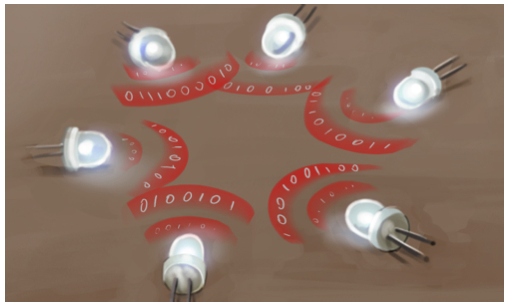LED-to-LED Visible Light Communication Networks
We present and evaluate a software-based VLC physical layer and a VLC medium access control layer that retain the simplicity of the LED-to-LED approach. The design satisfies the requirement that LEDs should always be perceived as on with constant brightness.
August 1, 2013
ACM International Symposium on Mobile Ad Hoc Networking and Computing (ACM MobiHoc) 2013
Authors
Stefan Schmid (Disney Research/ETH Joint PhD)
Giorgio Corbellini (Disney Research)
Stefan Mangold (Disney Research)
Thomas Gross (ETH Zurich)
LED-to-LED Visible Light Communication Networks
Visible Light Communication (VLC) with Light Emitting Diodes (LEDs) as transmitters and receivers enables low bitrate wireless adhoc networking. LED-to-LED VLC adhoc networks with VLC devices communicating with each other over free-space optical links typically achieve a throughput of less than a megabit per second at distances of no more than a few meters. LED-to-LED VLC adhoc networks are useful for combining a smart illumination with low-cost networking. We present and evaluate a software-based VLC physical layer and a VLC medium access control layer that retain the simplicity of the LED-to-LED approach. The design satisfies the requirement that LEDs should always be perceived as on with constant brightness. In each VLC device, in addition to an LED, only a low-cost microcontroller is required for handling the software-based communication protocol. The results of our performance measurements confirm recent claims about the potential of LED-to-LED VLC adhoc networks as a useful technology for sensor networks, smart and connected consumer devices, and the Internet-of-Things.

